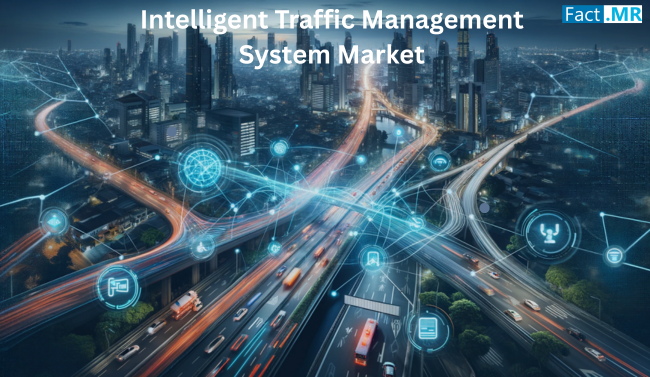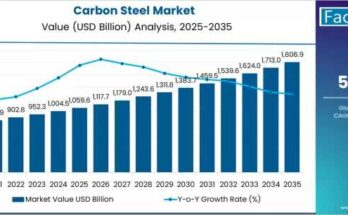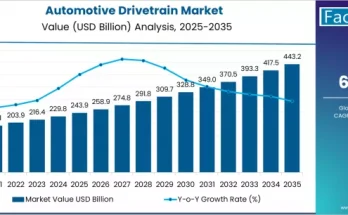As urban populations expand and vehicular density increases, the need for efficient, responsive, and sustainable traffic management has become more urgent than ever. Intelligent Traffic Management Systems (ITMS) are at the forefront of modern urban planning, integrating advanced technologies like AI, IoT, and data analytics to optimize traffic flow, reduce congestion, enhance commuter safety, and minimize environmental impact.
The market for ITMS is poised for significant growth over the coming decade, driven by increasing smart city initiatives, the adoption of real-time traffic monitoring, and the deployment of connected infrastructure. The demand for automated, data-driven decision-making in traffic operations marks a major shift from traditional, manual traffic systems to intelligent, adaptive frameworks.
Market Overview
An Intelligent Traffic Management System encompasses a suite of integrated technologies that manage and optimize road traffic by collecting, analyzing, and acting on traffic data in real time. These systems include components such as traffic signal control, automatic number plate recognition (ANPR), incident detection systems, adaptive traffic signals, and variable message signs.
The core objective of ITMS is to create an interconnected transportation network that improves traffic efficiency, enhances public safety, supports law enforcement, and reduces travel time. These systems not only facilitate better route planning but also empower urban authorities to proactively respond to traffic-related emergencies.
Key drivers of the ITMS market include the global trend toward smart city infrastructure, rising concerns over road safety, increased investments in public transport modernization, and the growing reliance on mobility-as-a-service (MaaS) platforms.
Regional Insights
- North America: North America is leading in the deployment of Intelligent Traffic Management Systems, backed by established digital infrastructure, high vehicle ownership rates, and proactive government investments in smart mobility. The U.S., in particular, is integrating ITMS into urban transportation frameworks through initiatives like connected vehicle pilot programs and city-level smart corridor projects.
- Europe: Europe’s adoption of ITMS is driven by its emphasis on environmental sustainability and regulatory mandates aimed at reducing carbon emissions. Countries in the European Union are deploying intelligent traffic solutions in conjunction with green transportation goals, such as promoting electric vehicles and encouraging multimodal transportation. Smart traffic light management, dynamic road pricing, and real-time congestion monitoring are integral components of Europe’s mobility strategy.
- Asia-Pacific: Asia-Pacific is emerging as a promising market for ITMS due to rapid urbanization, increasing vehicular traffic, and strong governmental focus on building smart cities. Countries like China, Japan, South Korea, and India are implementing intelligent traffic systems in metropolitan areas to reduce traffic bottlenecks and air pollution. With growing investments in digital infrastructure and 5G, Asia-Pacific is likely to experience rapid advancements in AI-driven traffic analytics.
Rest of the World
The Middle East and Africa are gradually adopting ITMS as part of their broader smart city visions, particularly in urban hubs like Dubai and Riyadh. Latin America is also witnessing pilot deployments of intelligent traffic systems, albeit at a slower pace, driven by urban transport reform and public-private partnerships.
Key Trends & Forecast
- Integration of AI and Machine Learning
Artificial intelligence is playing a transformative role in ITMS by enabling systems to learn from traffic patterns and predict congestion points. AI algorithms are used to dynamically adjust traffic signal timings, detect anomalies, and automate incident responses, leading to enhanced traffic flow and safety.
- Real-Time Data Analytics
The ability to collect and analyze real-time data from various sources such as CCTV cameras, road sensors, GPS, and mobile applications is a fundamental trend in intelligent traffic management. Real-time analytics enables timely decisions related to route optimization, congestion management, and emergency response coordination.
- Adoption of IoT and Connected Devices
IoT integration is enabling communication between traffic control systems, vehicles, and infrastructure. Smart traffic lights, vehicle detection sensors, and digital signage systems can share data seamlessly to improve situational awareness and response times.
- Vehicle-to-Infrastructure (V2I) Communication
With the rise of connected vehicles, ITMS is increasingly incorporating V2I technology to facilitate two-way communication between vehicles and traffic infrastructure. This enhances the effectiveness of safety alerts, dynamic speed regulation, and intersection management.
- Demand for Environmental Sustainability
The environmental benefits of ITMS, such as reduced vehicle idling and optimized fuel consumption, are gaining importance amid rising climate concerns. Intelligent traffic systems are being used to lower urban emissions by minimizing congestion and improving traffic flow.
- Public-Private Partnerships (PPP)
Governments are collaborating with private tech companies to accelerate ITMS deployment. Such partnerships allow for faster technology integration, innovation in smart infrastructure, and shared funding models that reduce the burden on public resources.
- Expansion of Smart City Projects
Global smart city initiatives are fueling ITMS growth. Intelligent traffic management forms the backbone of smart mobility, which is a key pillar in smart city development. Urban areas are increasingly integrating ITMS into broader platforms that include surveillance, emergency services, and public transport networks.
Applications & End-Use Outlook
Intelligent Traffic Management Systems are applied across diverse transportation and urban development sectors. Key end-use areas include:
Urban Traffic Control
Cities are leveraging ITMS to optimize traffic signals, manage congestion in real time, and enhance pedestrian safety. Urban traffic control systems integrate adaptive signal controls and real-time traffic monitoring to improve traffic throughput.
Highway Monitoring
ITMS on highways supports vehicle tracking, incident management, toll collection, and lane control. These systems help reduce accident response times and enable dynamic rerouting in case of road blockages.
Law Enforcement Support
Automatic number plate recognition (ANPR) and red-light enforcement systems are helping law enforcement agencies monitor traffic violations and track vehicles involved in crimes, thereby improving road safety and compliance.
Public Transportation Integration
Integrating ITMS with public transit allows for the real-time tracking of buses and trains, reducing waiting times and enhancing commuter satisfaction. These systems support priority signaling for public transport vehicles to streamline urban mobility.
Emergency Response
ITMS facilitates quicker emergency response by providing live traffic data to emergency services, helping them plan the fastest route to accident sites or hospitals. Emergency vehicle preemption systems are a growing segment in this domain.
Challenges and Opportunities
Despite strong growth prospects, the ITMS market faces challenges including high initial implementation costs, cybersecurity threats, and interoperability issues among different systems. The complexity of integrating legacy infrastructure with new technology also presents hurdles in many regions.
However, these challenges are counterbalanced by significant opportunities such as:
- The rise of autonomous and electric vehicles demanding more responsive infrastructure.
- The availability of cloud-based platforms to manage and analyze traffic data.
- Increasing demand for mobile apps and digital platforms providing real-time traffic updates and alternative route suggestions.
Future Outlook
The future of the Intelligent Traffic Management System market is shaped by the continued convergence of digital technologies with transportation infrastructure. With the evolution of AI, 5G connectivity, and edge computing, ITMS will become more predictive and self-learning, enabling cities to transition toward fully autonomous traffic ecosystems.
Moreover, with the rising importance of carbon-neutral cities and sustainable mobility, ITMS will play a pivotal role in reducing urban emissions, encouraging public transport usage, and promoting shared mobility solutions.
Conclusion
The Intelligent Traffic Management System market is not just about managing traffic—it’s about transforming the way cities operate and how citizens commute. As urban centers worldwide move toward smart, sustainable growth, ITMS solutions will be critical to achieving safer, greener, and more efficient transportation networks.
Organizations and governments looking to invest in smart city infrastructure should consider comprehensive ITMS strategies that leverage real-time data, AI-driven analytics, and scalable architectures. Accessing robust market insights and staying aligned with technological advancements will be essential in crafting resilient and future-ready urban mobility solutions.



